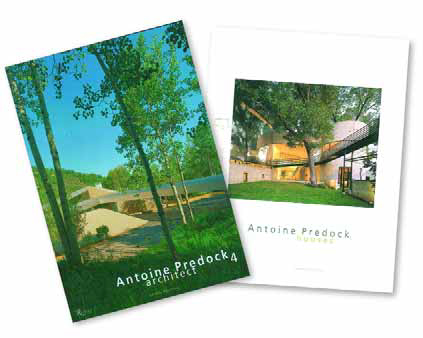ARTICLES
Advance Search
Aquatic Health
Aquatic Health, Fitness & Safety
Around the Internet
Aquatic Culture
Aquatic Technology
Artful Endeavors
Celebrity Corner
Life Aquatic
Must-See Watershapes
People with Cameras
Watershapes in the Headlines
Art/Architectural History
Book & Media Reviews
Commentaries, Interviews & Profiles
Concrete Science
Environment
Fountains
Geotechnical
Join the Dialogue
Landscape, Plants, Hardscape & Decks
Lighter Side
Ripples
Test Your Knowledge
The Aquatic Quiz
Other Waterfeatures (from birdbaths to lakes)
Outdoor Living, Fire Features, Amenities & Lighting
Plants
Ponds, Streams & Waterfalls
Pools & Spas
Professional Watershaping
Structures (Editor's Notes)
Travelogues & History
Water Chemistry
WaterShapes TV
WaterShapes World Blog
Web Links
Around the Internet
Aquatic Culture
Aquatic Technology
Artful Endeavors
Celebrity Corner
Life Aquatic
Must-See Watershapes
People with Cameras
Watershapes in the Headlines
If there's a constant in watershape and landscape design and construction, it's that clients are almost invariably different from one another. Through years of watching how others approach these singularities, we've seen some designers (and builders) who are so set in their ways that they limit what they're willing to provide. Indeed, there even seems to be a bias in the industry at large toward elevating those designers who have a "trademark style." In our company's case, however, repetition of styles and features is not something that gets us going: Rather, we find it much more challenging and interesting to approach each project with fresh eyes and a genuine curiosity about our clients' dreams. To that end, our approach at Verdant Custom Outdoors (San Diego, Calif.) is all about understanding our clients and avoiding any preconceptions about what we think they might want. That in mind, we deliberately approach all clients and projects with a desire to meet individualized needs - a practice that has required us to become totally adaptable when it comes to both design and construction. To be sure, this approach adds a layer of complexity to what we do in that we start from scratch with every project. Our process requires a great deal of research, but as we see it, it's always been an investment of time and resources that constantly
If there's a constant in watershape and landscape design and construction, it's that clients are almost invariably different from one another. Through years of watching how others approach these singularities, we've seen some designers (and builders) who are so set in their ways that they limit what they're willing to provide. Indeed, there even seems to be a bias in the industry at large toward elevating those designers who have a "trademark style." In our company's case, however, repetition of styles and features is not something that gets us going: Rather, we find it much more challenging and interesting to approach each project with fresh eyes and a genuine curiosity about our clients' dreams. To that end, our approach at Verdant Custom Outdoors (San Diego, Calif.) is all about understanding our clients and avoiding any preconceptions about what we think they might want. That in mind, we deliberately approach all clients and projects with a desire to meet individualized needs - a practice that has required us to become totally adaptable when it comes to both design and construction. To be sure, this approach adds a layer of complexity to what we do in that we start from scratch with every project. Our process requires a great deal of research, but as we see it, it's always been an investment of time and resources that constantly
For years now, we've all heard that consideration of a site and its surrounding environment is one of the things that separates the average from the truly great projects. For my part, as I've grown as a watershape designer, I've found this simple concept carrying more and more weight in my work. With that site-driven value system somewhere in mind, I recently came across two books that provide some of the most compelling examples of this approach I've ever seen. It all started when I read a newspaper article about architect Antoine Predock, the 2006 recipient of the
For years now, we've all heard that consideration of a site and its surrounding environment is one of the things that separates the average from the truly great projects. For my part, as I've grown as a watershape designer, I've found this simple concept carrying more and more weight in my work. With that site-driven value system somewhere in mind, I recently came across two books that provide some of the most compelling examples of this approach I've ever seen. It all started when I read a newspaper article about architect Antoine Predock, the 2006 recipient of the
When I sit down with clients for our first face-to-face meeting, we discuss a range of issues that will guide me when I return to my studio and get down to designing a watershape and surrounding areas for them. We'll talk about colors, materials, the location of the pool, their preferences in art, the way they entertain and, perhaps most important of all, how they plan to use their backyard and swimming pool. Let's focus on that last point: When we talk about how a pool is going to be used, what I really want to know is how it will be used on a daily or weekly basis (for swimming, exercise, play or simply as a visual), not how it's going to be used once or twice each year when they throw a big pool party. My thought is that these clients will
When I sit down with clients for our first face-to-face meeting, we discuss a range of issues that will guide me when I return to my studio and get down to designing a watershape and surrounding areas for them. We'll talk about colors, materials, the location of the pool, their preferences in art, the way they entertain and, perhaps most important of all, how they plan to use their backyard and swimming pool. Let's focus on that last point: When we talk about how a pool is going to be used, what I really want to know is how it will be used on a daily or weekly basis (for swimming, exercise, play or simply as a visual), not how it's going to be used once or twice each year when they throw a big pool party. My thought is that these clients will
For years, I refused to eat tangerines and oranges because I hated the seeds. It was too much work to peel off the rind and then sift through the sections and pull out the seeds before finally getting to the juicy, delicious part of the fruit. I opted instead to get my Vitamin C from other sources. One winter several years ago, my attitude changed after I was handed a Satsuma tangerine. Surprised at how easy it was to peel and even more stunned by the absence of seeds, I savored the fruit's sweetness and enjoyed a more natural form of vitamin intake. In fact, I found myself devouring
For years, I refused to eat tangerines and oranges because I hated the seeds. It was too much work to peel off the rind and then sift through the sections and pull out the seeds before finally getting to the juicy, delicious part of the fruit. I opted instead to get my Vitamin C from other sources. One winter several years ago, my attitude changed after I was handed a Satsuma tangerine. Surprised at how easy it was to peel and even more stunned by the absence of seeds, I savored the fruit's sweetness and enjoyed a more natural form of vitamin intake. In fact, I found myself devouring
When I teach seminars on watershape design, I always emphasize the importance of having a list of questions to ask prospective clients during initial conversations. It's a point that always seems to ignite discussion - and it usually ends up with someone in the audience asking me to provide such a document for general use. I always refuse to do so, not because I consider my approach a trade secret, but rather because everyone's business and approach to clients is a little different and the questions I ask might not be exactly the questions everyone else would (or should) ask. The issue has come up frequently enough through the years, however, that I've finally assembled
When I teach seminars on watershape design, I always emphasize the importance of having a list of questions to ask prospective clients during initial conversations. It's a point that always seems to ignite discussion - and it usually ends up with someone in the audience asking me to provide such a document for general use. I always refuse to do so, not because I consider my approach a trade secret, but rather because everyone's business and approach to clients is a little different and the questions I ask might not be exactly the questions everyone else would (or should) ask. The issue has come up frequently enough through the years, however, that I've finally assembled

















